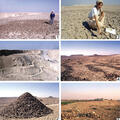A Note on the Interregional Interactions between the Indus Civilization and the Arabian Peninsula during the Third Millennium BCE
"This article examines the diachronic developments of the interregional relationship between the two regions based on the ceramic evidence both from the Greater Indus Valley and the Arabian peninsula.









